Eighteen international students participated in a field trip to enjoy the historical sights of Kamakura City on May 22. The outing was organized as part of the Intensive Japanese Course offered by the Japanese Section at Tokyo Tech’s Institute for Liberal Arts (ILA). The language learners, together with three Tokyo Tech faculty and staff members, joined five members of the Kanagawa Systematized Goodwill Guide Club (KSGG), a volunteer guide group based in Kanagawa Prefecture, to tour various places of interest in the area.
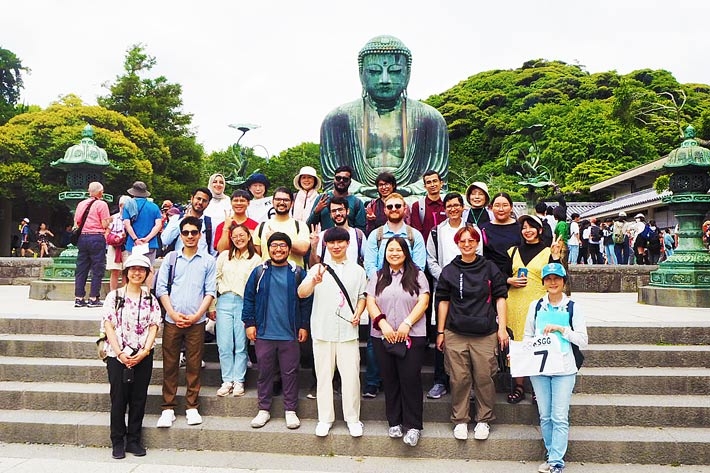
Group photo with Great Buddha of Kamakura at Kotokuin Temple
After splitting into three groups based on their Japanese-language abilities, the students started their journey at Kamakura Station. They walked Komachi Dori, Kamakura’s famous shopping street, and then took Wakamiya Oji, the main shrine approach in the city, which led them to Tsurugaoka Hachimangu Shrine.
The students and guides then boarded the Enoshima Electric Railway, a train line with its own historical charm, to reach Kotokuin Temple and the famous Daibutsu, an outdoor statue of Buddha that is designated as a national treasure. By walking around the city and visiting numerous shrines and temples with their bilingual guides, the students seized a great opportunity to practice their Japanese and interact with locals outside Tokyo Tech’s campuses.
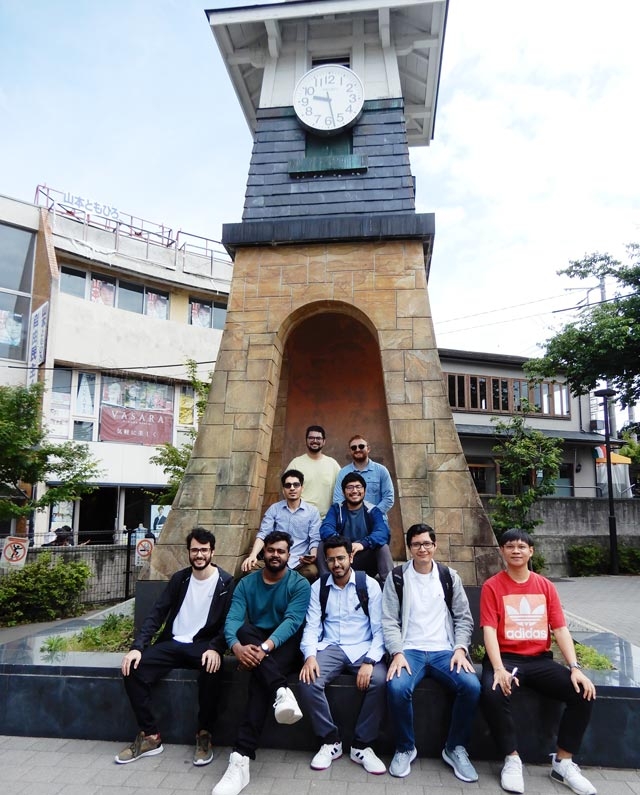 At clock tower near Kamakura Station’s west exit
At clock tower near Kamakura Station’s west exit
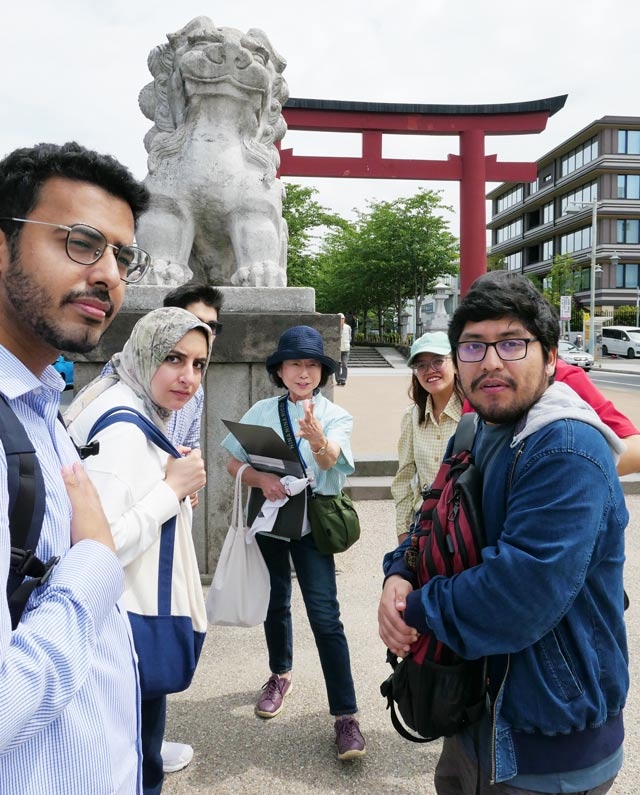 Students listening to local guide at second torii gate
Students listening to local guide at second torii gate
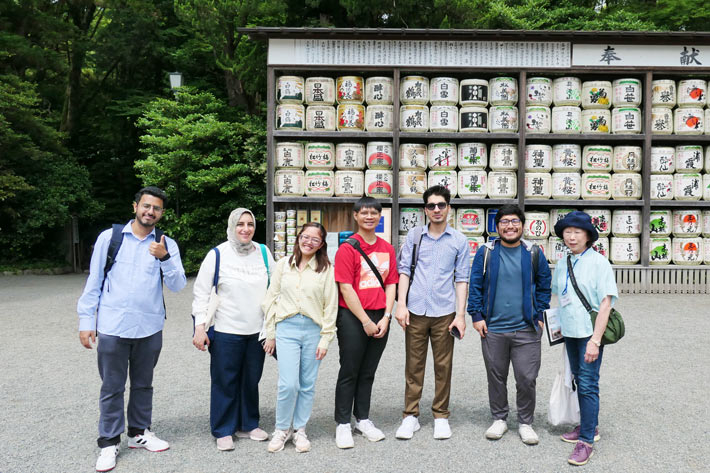
Group shot after listening to explanation of sake barrels dedicated to gods
Comments from participating students
- The trip was really moving. Getting to know the history of Japan through locals is a unique and exciting experience. It was a way to understand and appreciate Japanese culture. I am really grateful for the experience.
- The most memorable part of the tour was going through the second torii gate to Tsurugaoka Hachimangu Shrine. I admired the guide’s deep knowledge of history. I would like to research the history of my own neighborhood in a similar way.
- The most impressive thing for me is how interesting kanji characters are. Kanji characters can tell stories and relate to each other. I found it interesting to know and experience the culture and practices of Japanese people, such as the washing of hands for purification, the way of praying or wishing, and the meaningful five-yen coin. Overall, immersion in Japanese culture was a very beautiful experience for me.
- It was great fun. I was able to learn a little about Japanese history and Buddhism. The most impressive things were the many barrels of sake dedicated to and displayed at Tsuruoka Hachimangu Shrine.
- I always wanted to visit Kamakura and was curious about the history. We had the opportunity to learn and practice some of Japanese as well. Our group’s guide was so kind and patient. We were able to understand the history and facts behind Kamakura. We were able to see and experience Japanese culture and were also able to connect with our classmates. Since our guide explained every detail in both Japanese and English, we were able to understand everything completely. I also find it interesting that there are many cultural similarities between India and Japan.
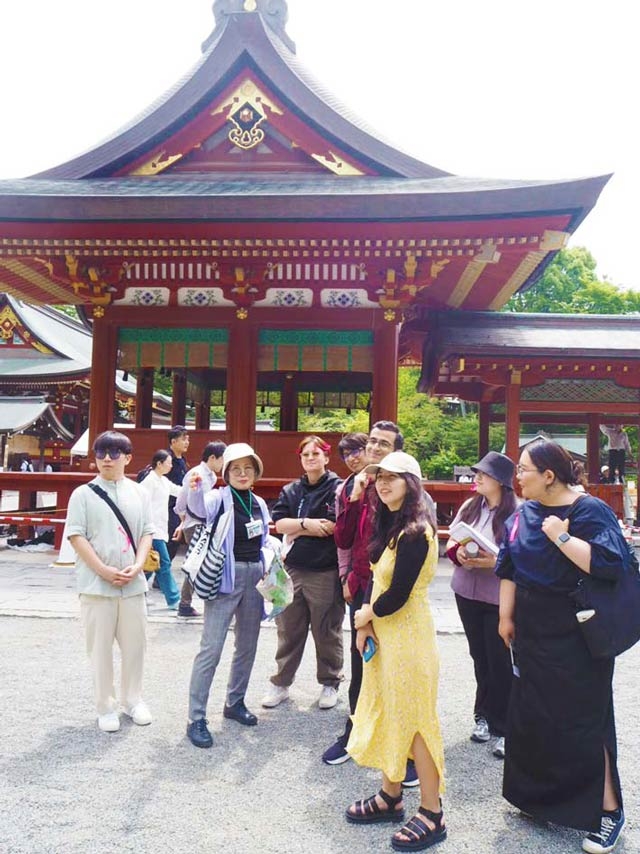
Students listening to local guide at Tsurugaoka Hachimangu Shrine
Tokyo Tech’s Intensive Japanese Courses
Tokyo Tech’s Intensive Japanese Courses, held twice a year, are aimed mainly at Japanese government-sponsored international students looking to progress to graduate-level studies. Other students are also invited to join if capacity allows.
These courses aim to develop Japanese proficiency among beginner-level students who have just arrived in Japan. By the end of the course, each international student will have acquired sufficient language skills to make an oral presentation in basic Japanese. ILA’s Japanese Section functions as “a hub for meeting and learning” for students from different cultural backgrounds, and a safe place where international students can exchange information about life in Japan.
Encounters with Japanese culture and people are important components of the courses. International students visit places such as Kamakura City and Sona Area Tokyo, an experienced-based learning facility for disaster prevention. Intensive Japanese Course students also conduct active exchanges with elementary school students in Tokyo’s Ota City.







